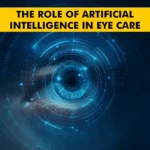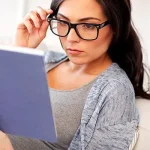Lazy eye, medically known as amblyopia, is a common vision development disorder that primarily affects children. It occurs when one eye develops weaker vision because it fails to work properly with the brain. This results in the brain favoring one eye over the other, which can cause long-term visual impairments if not addressed promptly. Early identification and appropriate treatment for lazy eye are essential for restoring normal vision and ensuring healthy eye development.
In this blog, we will discuss what causes lazy eye, its symptoms, potential complications, and various options, including home treatment for lazy eye, surgical procedures and amblyopia specialists.
What Is Meant by Lazy Eye?
Lazy eye, or amblyopia, occurs when there is a disconnect between the brain and one eye, leading to decreased visual acuity in the weaker eye. This condition usually develops during early childhood and is a leading cause of visual impairment in children. If left untreated, it can persist into adulthood and cause permanent vision problems.
Understanding the lazy eye symptoms and its causes is crucial for timely intervention. Options such as eye patch for amblyopia or even surgery can make a difference when started early.
What Causes Lazy Eye?
The following are the primary causes of amblyopia (lazy eye):
- Strabismus: Misalignment of the eyes, where one eye turns inward, outward, upward, or downward, leading the brain to suppress the weaker eye.
- Refractive Errors: Significant differences in vision (e.g., nearsightedness or farsightedness) between the two eyes, causing the brain to rely more on the eye with better vision.
- Deprivation Amblyopia: This occurs when a condition such as a cataract blocks light from entering the eye, preventing visual development.
- Droopy Eyelid (Ptosis): A drooping eyelid can partially or completely block vision in one eye, contributing to amblyopia.
- Eye Injury: Trauma or untreated eye conditions can lead to vision suppression and lazy eye development.
How to Recognize the Symptoms of Lazy Eye?
Identifying lazy eye symptoms early can lead to better outcomes with treatment. Look for the following signs:
- Reduced vision in one eye that cannot be corrected with glasses
- Difficulty with depth perception or hand-eye coordination
- Squinting or closing one eye to see better
- Misaligned eyes (strabismus)
- Tilting or turning the head to focus on objects
- Poor performance in activities that require visual precision
If you notice any of these symptoms in your child or yourself, it is essential to consult an amblyopia specialist for a comprehensive eye examination.
Potential Complications of Untreated Lazy Eye
Untreated lazy eye can lead to several complications, including:
- Permanent Vision Loss: The weaker eye may lose vision entirely if left untreated.
- Poor Depth Perception: Difficulty judging distances can affect daily tasks and activities.
- Strabismus: Misalignment of the eyes can become more pronounced over time.
- Reduced Confidence: Visual impairments can impact a child’s academic and social confidence.
Timely diagnosis and treatment can help prevent long-term consequences of amblyopia.
How Is Lazy Eye Diagnosed?
Lazy eye is diagnosed through a detailed eye examination conducted by an amblyopia specialist. The diagnostic process includes:
- Visual Acuity Tests: Assessing the clarity of vision in both eyes to detect any discrepancies.
- Eye Alignment Tests: Evaluating how well the eyes work together and identifying any misalignment (strabismus).
- Refractive Error Tests: Measuring the need for corrective lenses to determine significant differences in vision.
- Comprehensive Eye Exam: Identifying structural problems like cataracts or droopy eyelids that may contribute to amblyopia.
Early eye screenings in children, especially before the age of 7, are essential to detect and treat lazy eye effectively.
Effective Treatment for Lazy Eye
A comprehensive treatment for lazy eye aims to strengthen the weaker eye and improve overall vision. Here are the most effective options:
- Eye Patch for Amblyopia: A commonly used treatment where the stronger eye is covered with a patch, forcing the brain to rely on the weaker eye. Regular patching improves visual acuity over time.
- Corrective Lenses: Glasses or contact lenses are prescribed to correct refractive errors and balance vision between the two eyes.
- Vision Therapy: Eye exercises are designed to improve focus, coordination, and the brain-eye connection. These exercises are often done under professional supervision.
- Atropine Eye Drops: Medicated drops are used to blur vision in the stronger eye, encouraging the brain to use the weaker eye.
- Home Treatment for Lazy Eye: Activities like puzzles, reading, and games that require visual focus can be done at home to strengthen the weaker eye.
- Surgery for Lazy Eye: In severe cases, surgery may be required to correct eye alignment (strabismus) or remove obstructions like cataracts. Surgery is usually followed by patching or vision therapy.
Prevention and Early Management of Lazy Eye
- Schedule regular eye exams for children, especially under the age of 7.
- Address any eye conditions, such as strabismus or refractive errors, as soon as they are identified.
- Encourage activities that promote visual focus and eye coordination.
- Follow treatment plans prescribed by an amblyopia specialist, such as patching or vision therapy.
Proper diagnosis and treatment ensures the best outcomes. Early detection, proactive treatment, and ongoing eye care are key to managing lazy eye and maintaining healthy vision.
Have you been delaying an eye exam for quite some time? Book an Appointment with Centre for Sight in India!
Frequently Asked Questions
What causes a lazy eye?
In lazy eyes, the brain and the eye do not work together properly, leading to reduced vision in the affected eye. The brain relies more on the stronger eye, causing the visual pathway of the weaker eye to remain underdeveloped.
Can lazy eye be corrected?
Lazy eye, or amblyopia, can be treated through various methods depending on the severity of the condition and the underlying causes. The common amblyopia treatments are patching, atropine eye drops, vision therapy, or lazy eye surgery.
Is lazy eye common?
Lazy eye, or amblyopia, is relatively common, affecting around 2-3% of the population of our country.
Can lazy eyes develop in adults?
While a lazy eye typically develops in childhood, it can also occur in adults due to various factors such as strabismus (eye misalignment) or vision problems.
How is lazy eye diagnosed?
Lazy eye is diagnosed through comprehensive eye examinations, including visual acuity tests and assessments of eye alignment and movement.
What treatments are available for lazy eye?
Amblyopia treatments may include wearing an eye patch over the stronger eye to encourage the weaker eye to work harder, vision therapy, and in some cases, corrective eyewear or lazy eye surgery.
At what age is it too late to treat lazy eye?
It’s generally recommended to start amblyopia treatment as early as possible, ideally before the age of 7 or 8, but it’s still possible to see improvement in vision with treatment even in adulthood.
Can you fix a lazy eye?
Yes, lazy eye can be effectively treated if detected early. Treatments such as patching, corrective lenses, vision therapy, and in some cases, surgery, can improve vision.
Is lazy eye a disability?
Lazy eye can impair visual function, but it is not classified as a disability if treated early. Untreated amblyopia, however, may cause permanent vision impairment, affecting daily life.
How does a lazy eye happen?
Lazy eye occurs when one eye has reduced visual input to the brain due to refractive errors, misalignment, or obstructions like cataracts, leading the brain to favor the stronger eye.
What vitamin deficiency causes lazy eye?
Vitamin A deficiency can impact overall eye health, but lazy eye is primarily caused by structural and functional issues like refractive errors or misalignment, not by vitamin deficiencies.





